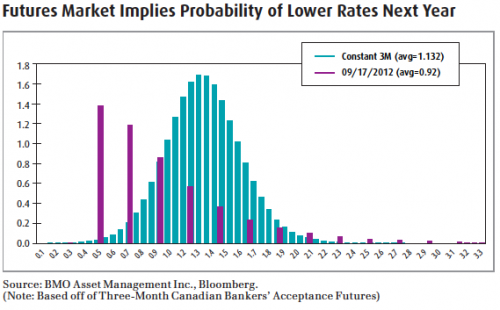In addition, dividend paying companies tend to be from more mature sectors, such as utilities, real estate investment trusts (REITs) and consumer staples, to name a few. These areas tend to be more stable, a desirable characteristic in this market climate. Though higher growth stocks will have their place in a portfolio, particularly in more tactical strategies, dividend paying stocks are better served for buy and hold investors. In choppy markets with strong moves both on the upside and downside, cyclical or high growth stocks will exhibit just as much, if not more downside then upside participation. As we highlighted last month, as one of our volatility mitigation strategies, dividend paying equities may help reduce the variability in an investor’s overall portfolio. For this reason, we continue to recommend an overweight to dividend oriented areas for the equity portion of a portfolio.
Potential Investment Ideas:
- BMO Canadian Dividend ETF (ZDV)
- BMO Equal Weight Utility Index ETF (ZUT)
- BMO Equal Weight REIT Index ETF (ZRE)
In with the New: Non-traditional Fixed Income
Another key investment theme we outlined in our 2011 strategy in January has been an exposure to investment grade corporate bonds and non-traditional fixed income. Again, with interest rates remaining low in the developed world, investors have been forced into areas outside of government bonds to source higher coupon paying credit. Emerging market debt and U.S. high yield bonds, which offer higher yields, have seen significant fund flows for this reason. While we are still recommending these areas, this does not suggest investors abandon traditional fixed income. Despite low rates, traditional government bonds continue to exhibit a negative correlation to equities, making them extremely useful in lowering portfolio volatility. Instead, an increase in allocation to emerging market debt and U.S. high yield bonds should be taken partially from equities. In addition, these areas should not be viewed as core investments in a portfolio as they tend to react to risk in similar fashion to equities at times.












